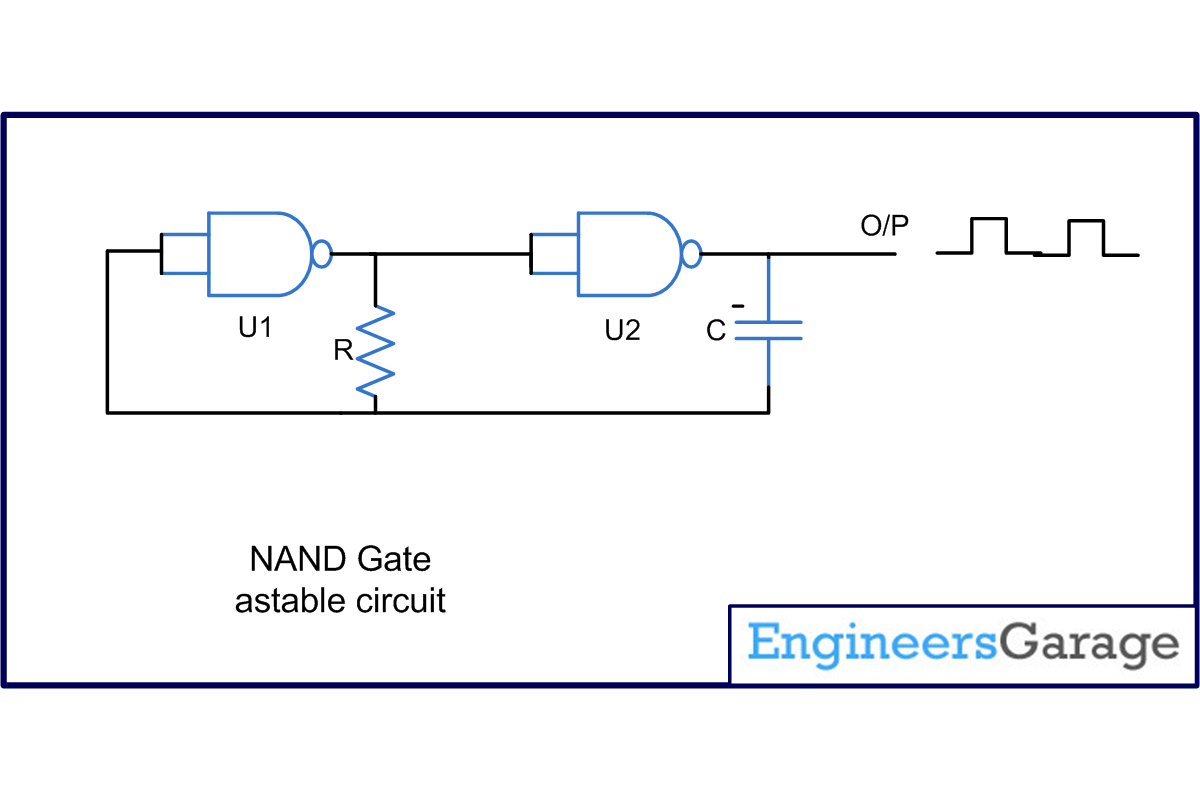Astable Multivibrators are a type of "free running oscillator" that have no permanent "Meta" or "Steady" state but are continuously changing from one state "LOW" to the other state "HIGH" and then back again to its original state.
This continuous switching action from "HIGH" to "LOW" and "LOW" to "HIGH" produces a continuous square wave output which has been shown in this electronics project.
The time constant for a NAND gate astable multivibrator is given by the formula,
T = 2.2RC in seconds with the output frequency given as f = 1/T.
The circuit based project uses IC 7400, which has four inbuilt NAND gates. The two NAND gates along with a capacitor(C) and resistor(R) are connected as shown in the figure. Suppose that initially the output from the second gate U2 is high, the input must therefore be low, as will be the output from the first NAND gate U1. The capacitor now charges up at a rate determined by the time constant of R and C.
As the Capacitor C charges up, the junction between the Resistor R and the Capacitor C, which is also connected to the input of the gate U1 decreases until the lower threshold value of U1 is reached. At this point U1 changes state and the output of U1 now becomes high. This causes gate U2 to also change state as its input has now changed from logic “0” to logic “1” resulting in the output of gate U2 becoming low. Capacitor C is now reverse biased and discharges itself through the input of gate U1. Capacitor C charges up again in the opposite direction determined by the time constant of both R and C until it reaches the upper threshold value of NAND gate U1. This causes U1 to change state again and the cycle repeats itself.
Circuit Diagrams
Project Components
Filed Under: Electronic Projects



Questions related to this article?
👉Ask and discuss on Electro-Tech-Online.com and EDAboard.com forums.
Tell Us What You Think!!
You must be logged in to post a comment.